|
2/22/2020 The semi-finalist is: tia factorNowhere Everywhere Oil and spray paint on acrylic dyed canvas over board, 48" x 60" 2018 Photo: Dan Kvitka My introduction to Tia Factor's artwork was Private Places, her show at Oranj Studio that was curated by Pamela Morris in 2018. At the time I was reading about Nicolas Poussin, the 17th century French Baroque painter known for elegantly balanced landscapes as well as biblical and historical scenes. Poussin often depicted an Arcadian countryside whose beauty was undercut by the suggestion of danger and the reality of death. What struck me about Factor's work was her personal approach to a similar theme, using the genre of landscape painting to document the darker side of utopias and communal living spaces. Like Poussin, she's not interested in simply illustrating pastoral views. Instead, the landscape is a vehicle for talking about instability and the human condition. But in Factor's paintings, instability doesn't come from nature or war, it comes from within. It is our own desire to create perfect environments and gated communities that contributes to the isolation, segregation, and conspicuous disparity that we see in our culture. Despite the gravity of her subject matter, Factor's paintings still manage to be beautiful and inviting. It's a jarring combination that makes me enjoy her work visually even as it leads me to consider troubling issues like inequality in America. Tia Factor recently agreed to be interviewed for The Semi-Finalist. Below are some questions, answers, and images of her work. The artist in her studio. Semi-Finalist: Let’s start somewhere near the beginning. How did you get started as an artist? Tia Factor: Both sides of my family had a real appreciation for art, especially on my dad’s side. There were a lot of artists in my dad’s family. My dad’s aunt Anne was a well-known artist in Israel and had supposedly even worked with Diego Rivera on a mural or two. With all these artists in the family it wasn’t a surprise that my dad and his brother both became artists. I also loved making art growing-up and got a lot of encouragement from my parents. However, I don’t think I ever envisioned a future for myself that included becoming an artist in the career sense of the word. Can We Just Live Here? Oil and spray paint on acrylic dyed canvas over board, 30" x 40" 2019 Photo: Jim Lommasson Having grown up with parents who embodied the classic archetype of hippies, I wanted a more conventional life for myself. I tried that on for a while in high school but eventually moved to the Bay Area and basically followed in my parents’ footsteps, who also moved from Chicago to the Bay Area as young adults, forging a non-conventional path for myself. I lived out in the country and hung out with the alternative folks, hippies, punks, artists, who all prioritized self-discovery above anything that might resemble a “responsible” career path. Not surprisingly, I ended-up in art school where the most obvious career path was to become an artist. What is surprising, though, is that I stuck with that path. The relationships with professors and peers from that period in my life were so meaningful and influential that I felt I had found “my people” as well as a guiding sensibility of how I wanted to be part of this world. While I don’t believe we are ever fixed in one identity and all of this is still evolving, I do know I will always be a person who values and finds satisfaction from the creative process and a sense of kinship within the art community. Can We Just Live Here? (Detail) S-F: You seem to love exploring the tension between privilege and alienation, beauty and ugliness, reality and artificiality. Can you talk about the origins of these themes in your work? TF: These are definitely ideas that circulate around my work. In unpacking the origins of these ideas, I’ve often looked at my own previously mentioned “coming-of-age”. I look at these oppositional forces in my upbringing that were imprinted on me: on the one hand I was born at home under the redwoods of Northern California, the only offspring of two young and idealistic hippie artists. The beauty of that rural place and the ethos of the time cut a deep groove in my psyche. When I was only seven years old we moved back to where my parents were from, to the urban expanse of Chicago and its endless suburbs. My parents slowly cast-off their 60’s identities; meanwhile, my cultural context and physical surroundings also shifted pretty radically. It's What Life Should Be Oil and spray paint on acrylic dyed canvas over board, 30" x 40", 2019 Photo: Dan Kvitka "Privilege/alienation, beauty/ugliness, reality/artificiality. All those concepts exist simultaneously in these constructed, aspirational, environments and, as you noted, in my paintings too." -Tia Factor The cultural values in suburban-Chicago were more conventional; the overall aesthetic of the built environment there was also more predictable and defined. The shift in surrounding landscape and the cultural context that came with it became a tangible symbol of the impact that the external landscape has upon a person’s internal landscape. Once I identified this belief, I had found my creative thesis, so to speak. This was around thirteen years ago. Since then, all my work looks at the environments that people create as a signal of their values, beliefs, fantasies, and aspirations. I look at how these environments impact how we feel- psychologically, emotionally, spiritually. Some call this psychogeography, but I feel the term topophilia more closely reflects what I’m after in my work because, as it’s defined by Yi-Fu Tuan, topophilia points at “the affective bond between people and place or setting” and it often becomes mixed with a sense of cultural identity and a love of certain aspects of place. Looking at projects like No Place, a series in which I interviewed folks who grew up in utopian experiments of the 70’s and 80’s, I think about how an environment like that separates itself from the larger society, creating an idealized place that simultaneously alienates its members from the larger culture. Details of It's What Life Should Be. This project continued on but evolved into a darker iteration with my series Private Places. This project emerged in November 2016 when Trump was elected and I just happened to be staying in a gated community in Hawaii. I stopped romanticizing communal life and began seeing the significance of the self-segregation Americans engage in as they isolate and protect themselves in cultural cocoons, converging and finding comfort among people whose values reflect their own most closely. While this is going on in places like Portland, where I’m writing from, the most blatant manifestation of this takes the form of a gated community which can also be seen as a contemporary version of a utopian experiment; at heart we find the same impulse to live among like-minded individuals who share in our values and usually look a lot like us. Members of the community, which may or may not have an official covenant, appreciate the benefits of shared resources and closeness with other community members. While this may sound wonderful, I always have to look at the flip-side and ask the question: who is excluded in this scenario and how does that lack of diversity and challenge limit the thinking and potential growth of those who have chosen to live behind walls? Privilege/alienation, beauty/ugliness, reality/artificiality. All those concepts exist simultaneously in these constructed, aspirational, environments and, as you noted, in my paintings too. Cimarron Oil on acrylic dyed canvas over board, 30" x 40" 2019 Photo: Jim Lommasson S-F: It was really exciting to see so many works in progress in your studio. Tell me about your painting process and how it’s evolving? TF: All my work tends to start with mark-making that is loose, ambiguous and amorphic as the underpainting. I like responding and conversing with that underpainting, or visual noise, which I also feel sets the overall tone for the work. The shift that my work has undergone lately has to do with content, as I explained earlier, as well as the general tone or emotional space that the deepest layer of the painting creates. In my current work you can see this shift in terms of my palette, which is now mostly warm hues with high-key values (lots of whites, yellows, and pinks). I stopped using the indigo dying process –indigo created a cool, internal, down-tempo atmosphere– which unified and set the emotional tone for Escapism, a series I worked on throughout 2016-17. Now I begin each painting with a Helen Frankenthaler-esque, gestural staining process with fluid acrylics. The stains flow and move across the pre-soaked canvas like pools of watercolor on paper. I love starting a painting with this sense of abandon and lack of control. When I leave the studio, the paint continues to flow, spreading and eventually drying in ways that are completely unexpected. It’s a chance-derived improvisation. I need this sense of surprise to keep myself truly curious since what I paint on top of it is fairly representational, derived from a photographic source. The backside of one of Factor's canvasses; something being started and something near completion. TF (continued): Another new way I’m building-in less prescriptive processes is by working with my source images in design programs first. I abstract them by applying filters and unrealistic colors and then combine the underpainting stains with the photographically derived imagery. I’m excited to see how much weirder and more abstract the work is becoming because of this process. I want the work to exist in that liminal zone between recognizable places and emotionally disorienting, seductive and abstract spaces. Inside, The Good Life Oil and spray paint on acrylic dyed canvas over board, 48" x 60", 2018 Photo: Dan Kvitka S-F: How does drawing play a role in your process? TF: Drawing is not really playing into my painting process these days. I used to print out my photo sources and make big composite drawings that were sort of drawn collages. I’d use these drawings as a jumping-off place for the painted works. But now I’m bringing the imagery into a digital program and creating a mock painting which becomes the blueprint I build the real painting from. Small studies and a corner of the studio. S-F: Your studio is filled with books and images that you refer to as sources of inspiration. Who are the artists and what are you learning from them? TF: I’m really into contemporary painting and have so many favorite painters. Peter Doig is way up there in my pantheon of painters because meeting him when I was a grad student at Berkeley completely influenced my creative trajectory at a crucial moment. Seeing his work gave me permission to make landscape painting, which has so much historic baggage that it can feel a bit fraught. Doig made the landscape feel fresh, relevant, personal and weird all at once. I also admire Doig’s pal Chris Ofili. Ofili’s work is also weird, honest, authentic and sometimes just straight-up awkward. I want all of that to be more present in my work and what others might say about my work. I’m also really interested in Hurvin Anderson and Michael Armitage. They both articulate that drippy, colorful, magical-realism that directs the viewer into liminal landscapes while delivering cultural commentary on an almost subliminal level. A few more painters who do this and who I admire tremendously are Kerry James Marshall, Mamma Andersson, Hernan Bas, and Njideka Akunyili Crosby. Sources of inspiration. S-F: Getting to know you and your career as an artist, it’s become clear that you do not sit still for very long. Talk about the projects that you are involved in outside of the studio. TF: A few things that come to mind are the gallery space I co-curate and my ongoing engagement with the Berlin art world in the form of leading students from Portland State University (PSU) each summer there. The gallery is called Erickson and I’ve been involved with that space for close to two years now, mostly curating emerging artists and talented recent grads from the School of Art + Design at PSU. We’ve just brought-on a new curator who’s programming shows throughout the year of work made by incarcerated artists at the Columbia River Correctional Institution (CRCI), a minimum security prison here in Portland. As a painter and curator, I’ve been a guest of the CRCI art program and plan to start going more regularly to teach classes. Going to Berlin is an amazing experience for my art and design students; it provides inspiration and connection to a broader and more diverse art scene that operates in a really different way than our regional scene here. For me, and the students, Berlin is inspiration, education and personal connection to a different art world. All of that helps me get out of my comfort zone and make better work. Pushing the limits of the studio space. S-F: What’s next for you? TF: Something that’s coming right up and is pretty exciting is the painting symposium and exhibition, Making A Better Painting: Thinking Through Practice, at the Hoffman Gallery (Lewis & Clark College, Portland). I collaboratively curated this exhibition and symposium with a number of other Pacific Northwest painters and educators and we’ve invited Molly Zuckerman-Hartung to deliver the keynote. As part of the exhibit we also created a parallel juried student show guest curated by painters Tatyana Ostapenko and Amy Bay (a former SF interviewee). All of us who organized Making A Better Painting are having a show called A Better Painting Pop-Up at Erickson Gallery that will be the culminating event of the symposium on Saturday, March 7th. Hope to see you at one of these events! S-F: The entire S-F team is planning on attending. See you there! You can see more of Tia Factor's work and geek out on her CV here. Below are a few more paintings. Harmony Cocoon, Factor's installation for the PDX Contemporary Window Project. Installation view: Vinyl on glass, oil on unstretched, acrylic stained canvas, 139 ½” x 94” x 63", 2019 Photo: Dan Kvitka Perfection Awaits You Oil on acrylic dyed canvas, 47.5" x 48", 2018 Photo: Dan Kvitka Skamania Oil and spray paint on acrylic dyed canvas, 48" x 48" 2018 Somewhere In Canada (from the series Escapism)
Oil on indigo dyed canvas over board, 48" x 60", 2016 Comments are closed.
|
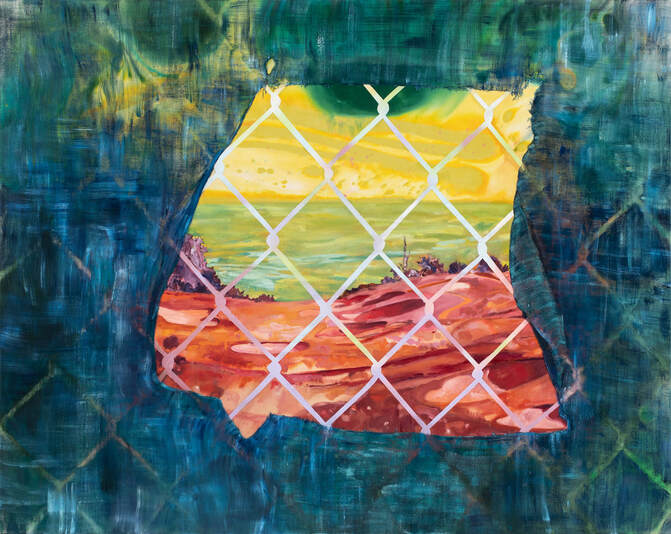
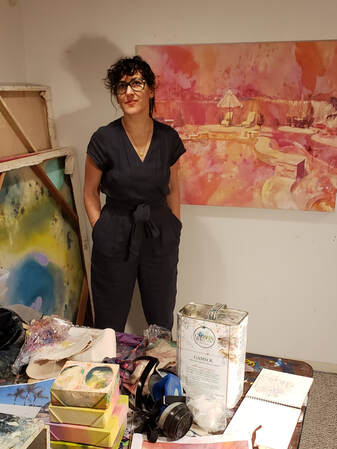
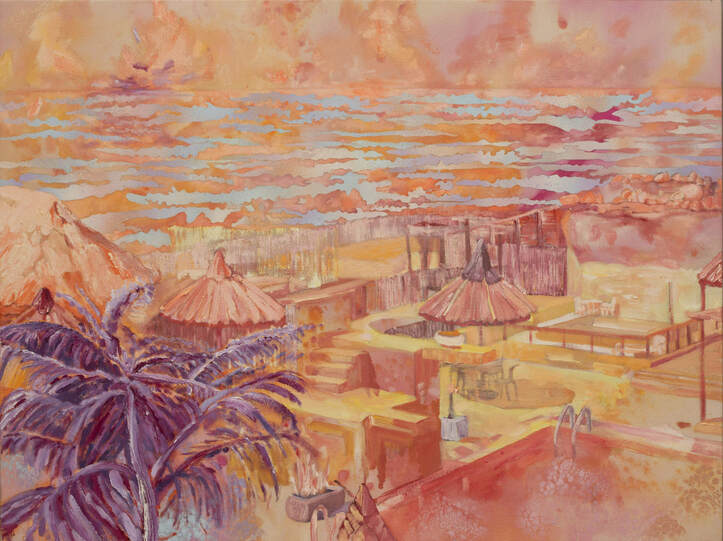
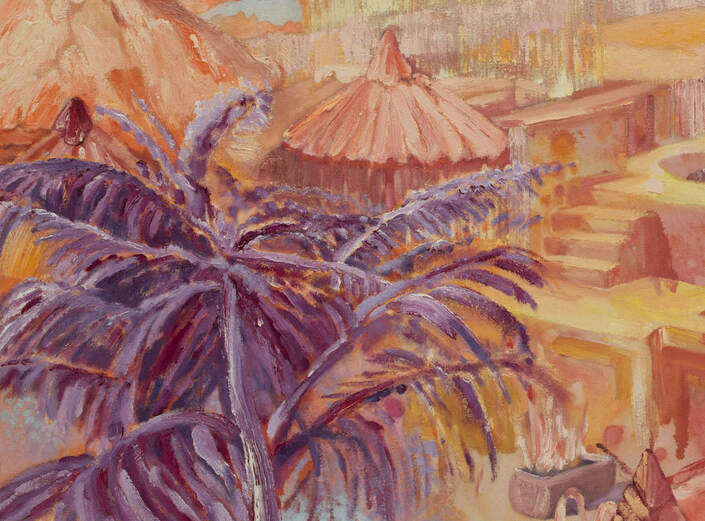
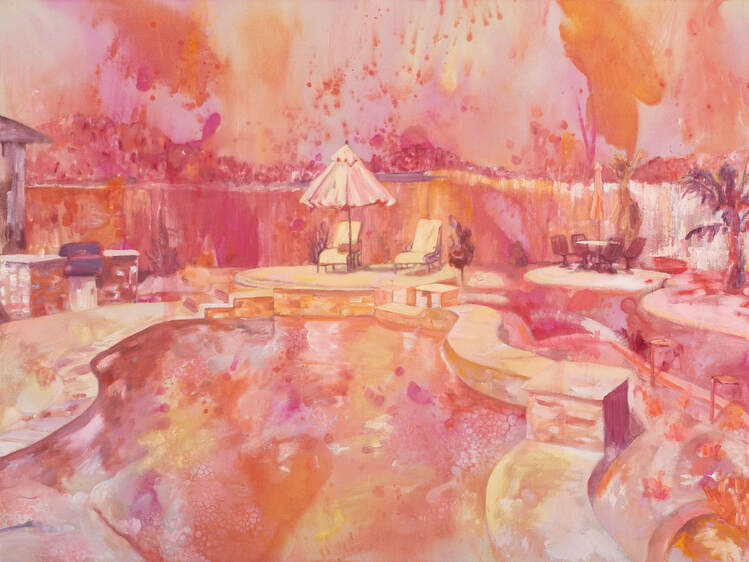
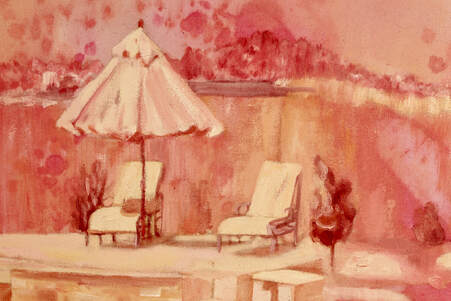
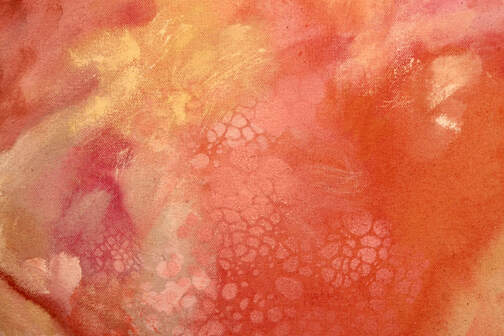
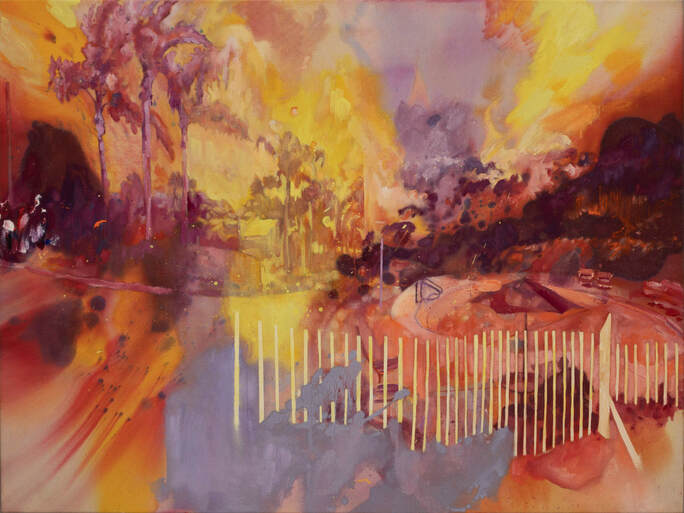
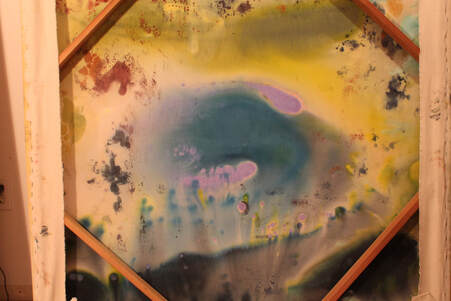
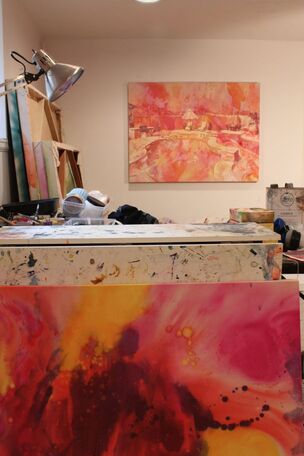
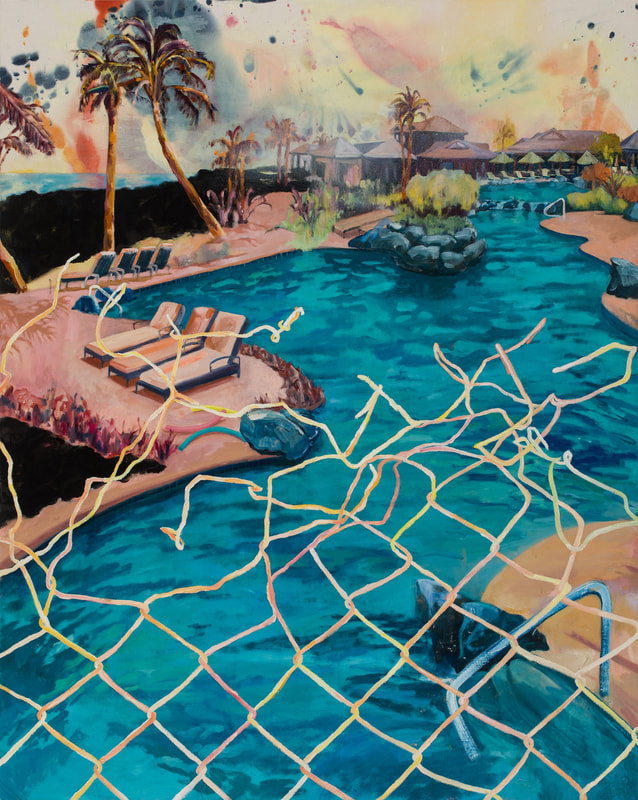
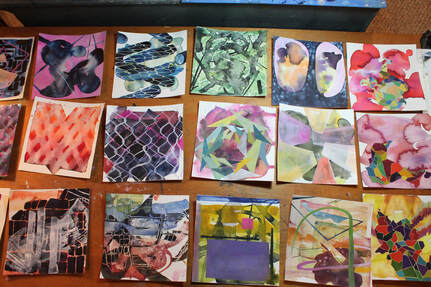
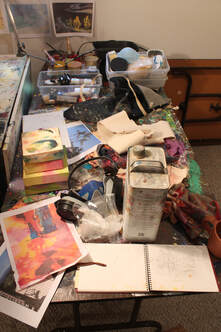
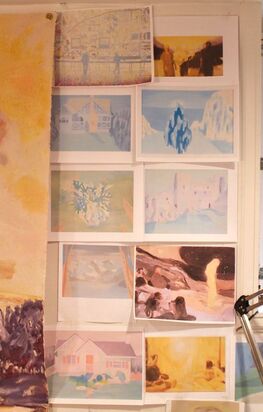
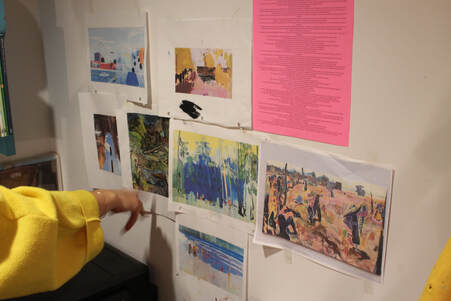
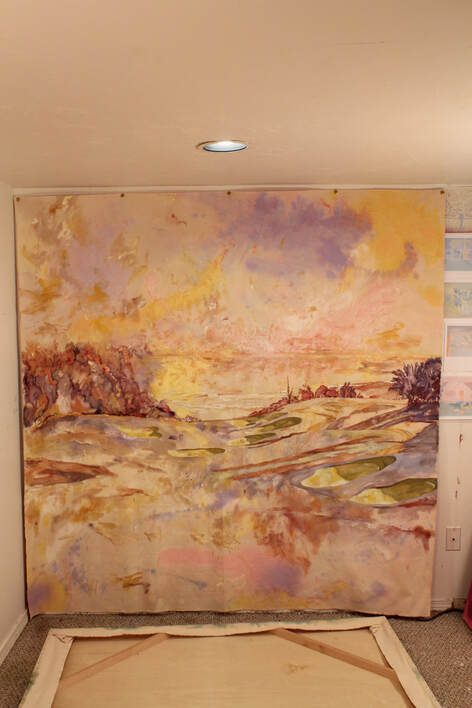
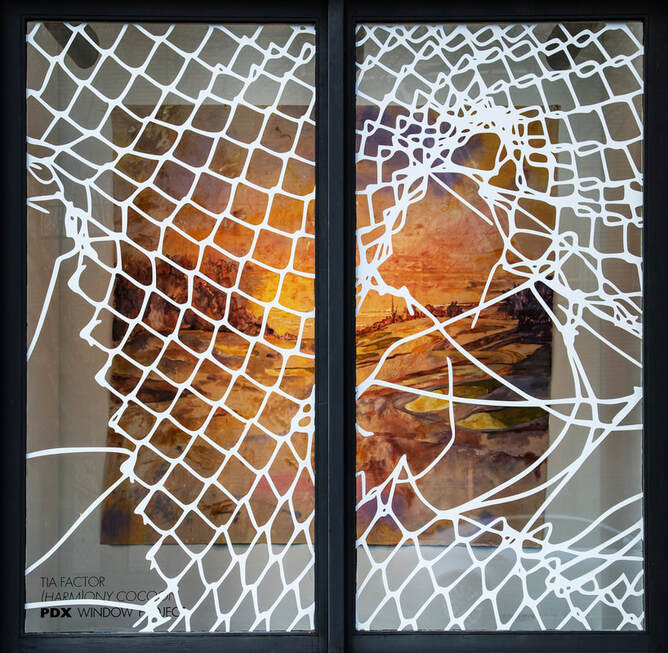
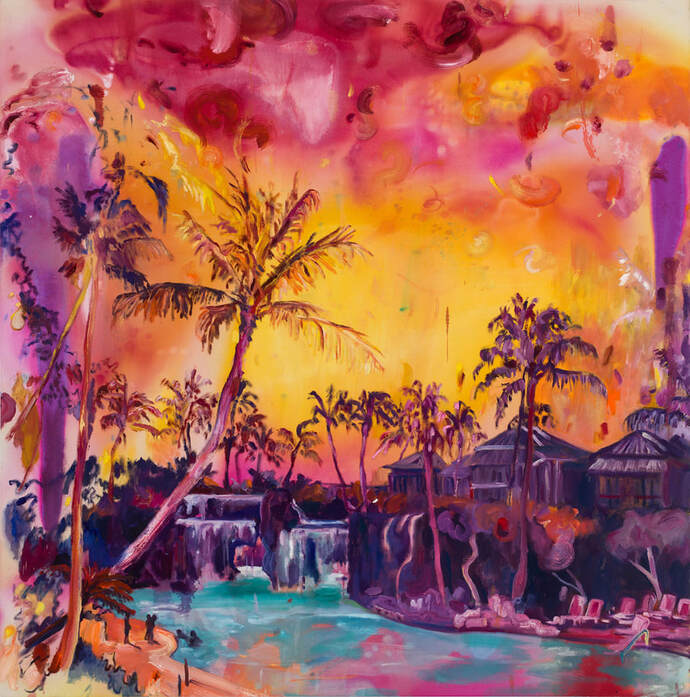
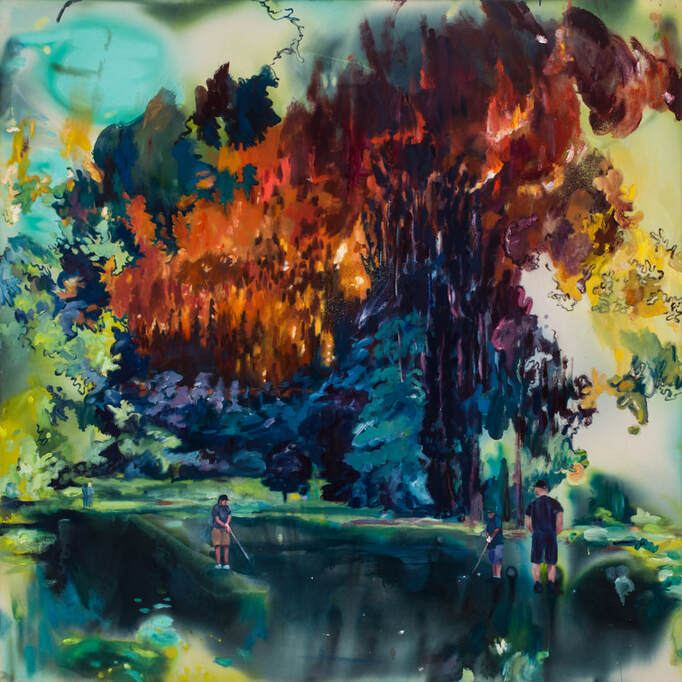
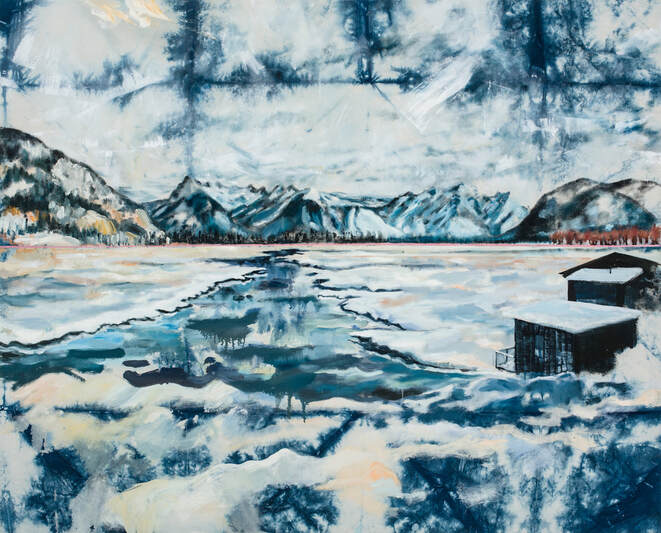
 RSS Feed
RSS Feed